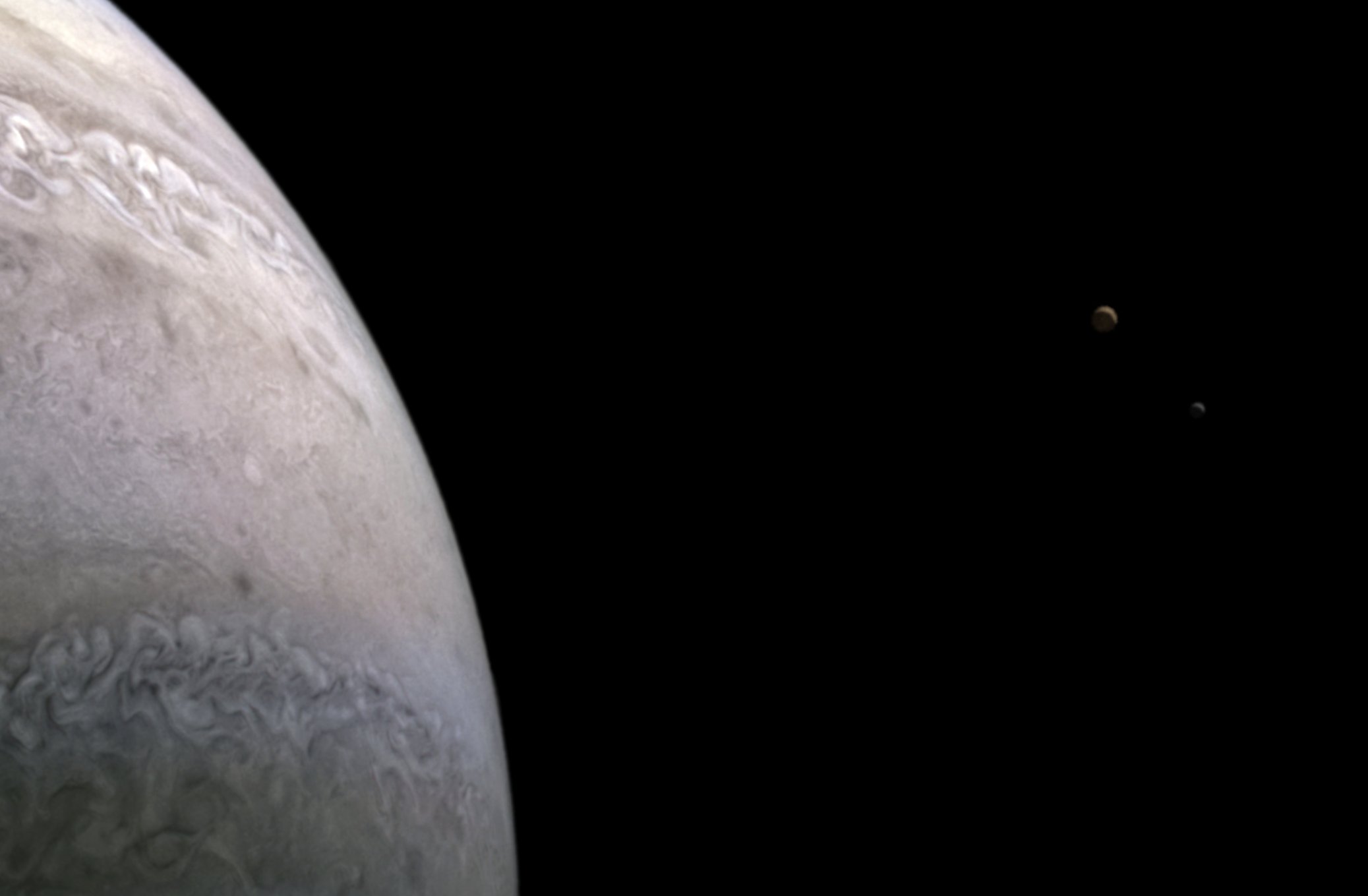NASA's Juno captures breathtaking view of Jupiter with moons lo and Europa

NASA's Juno spacecraft recently captured a breathtaking view of Jupiter, the largest planet in our solar system, with two of its moons. The picture, captured during the spacecraft's 39th close flyby of the planet on January 12, 2022, reveals the gas giant planet's intriguing moon Io (left) and Europa (right) in the same frame.
The spacecraft was about 38,000 miles (61,000 kilometres) from Jupiter's cloud tops when this picture was captured. Citizen scientist Andrea Luck created the image using raw data from the JunoCam instrument, NASA said.
Jupiter's moon Io is the most volcanically active world in the Solar System. According to NASA, its volcanoes are at times so powerful that they are seen with large telescopes on Earth.
Europa, on the other hand, is believed to be one of the best places in the solar system to seek present-day life beyond Earth. Its icy surface hides a global ocean of liquid water beneath, which is thought to contain twice as much water as Earth's oceans combined.
During a recent Jupiter flyby, the #JunoMission spacecraft glimpsed two other worlds as well: the giant planet’s intriguing moons Io & Europa. Details - https://t.co/B7Zu2efI8m 📸: Crop of a JunoCam image processed by AndreaLuck pic.twitter.com/Iy2LvxwK3x
— NASA Solar System (@NASASolarSystem) March 16, 2022
NASA's Juno mission was launched in 2011 to probe beneath Jupiter's dense clouds and answer questions about the origin and evolution of the gas giant, our solar system, and giant planets in general across the cosmos. Touted as the agency's most distant planetary orbiter, Juno is now on an extended mission till September 2025 or until the spacecraft's end of life.
In September 2022, Juno will have an opportunity to capture much more detailed observations of Europa when it makes the closest fly-by of the enigmatic moon in decades. The extended mission will also make close approaches to Io in late 2023 and early 2024.
- READ MORE ON:
- NASA Juno mission
- NASA Jupiter orbiter
- NASA
- Juno spacecraft










